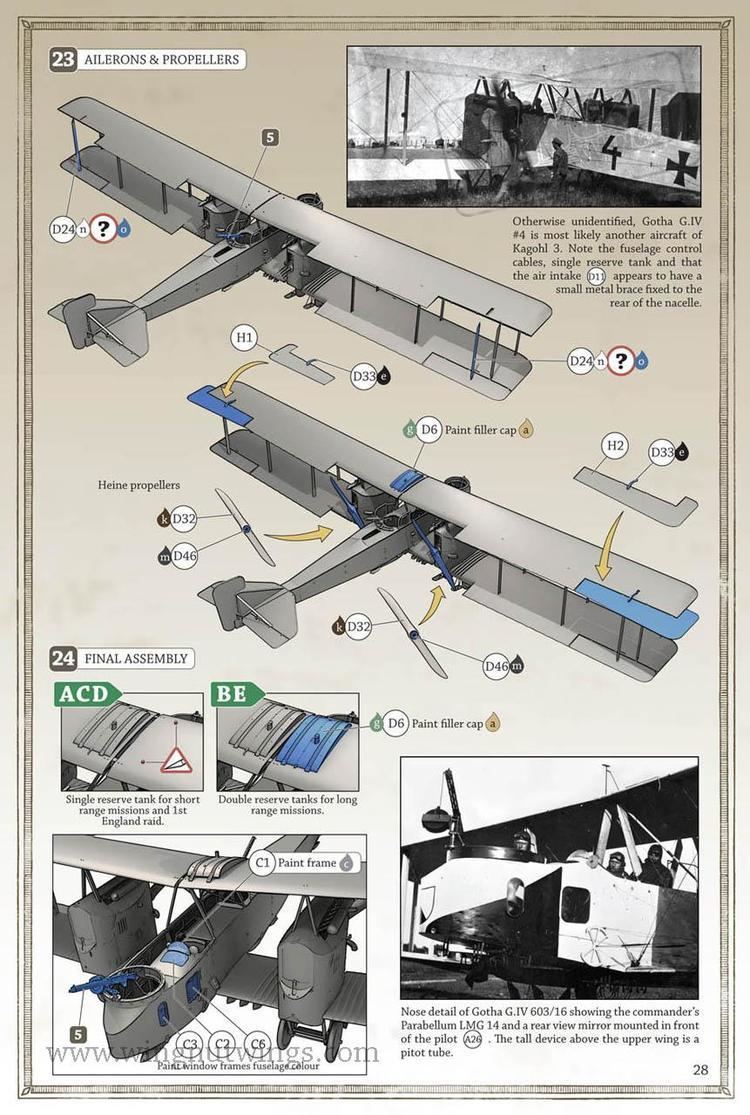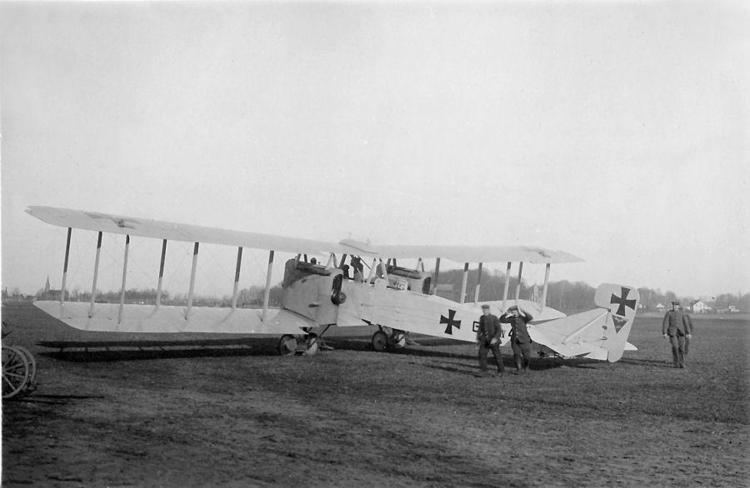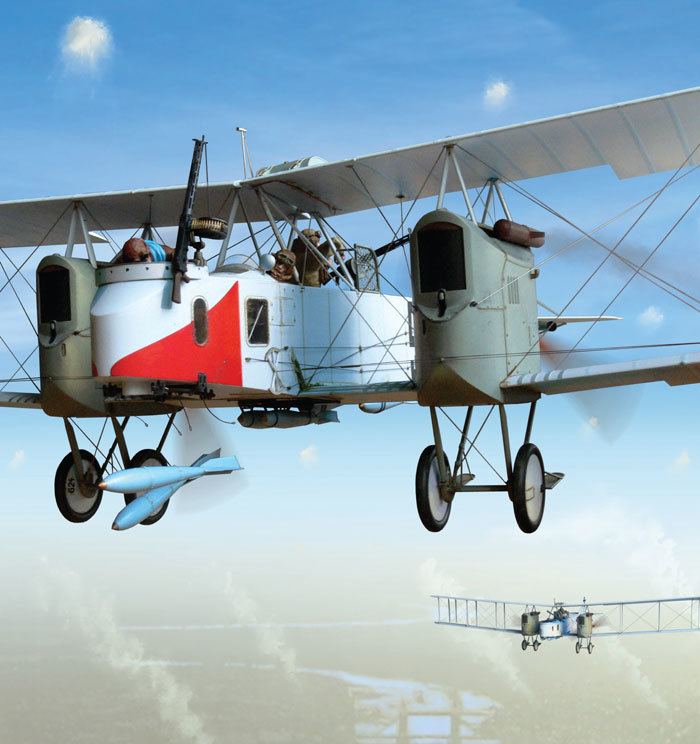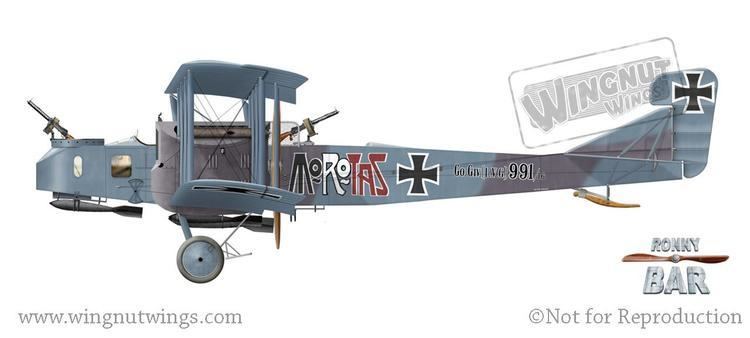Top speed 135 km/h Wingspan 24 m | Length 12 m First flight 1916 | |
 | ||
Manufacturers Siemens-Schuckert, Gothaer Waggonfabrik, LVG | ||
Maxford usa 1 15 gotha g iv wwi twin pusher bomber model plane arf
The Gotha G.IV was a heavy bomber used by the Luftstreitkräfte (Imperial German Air Service) during World War I.
Contents
Battlefield 1 open beta attacking gotha g iv bombers
Development

Experience with the earlier G.III showed that the rear gunner could not efficiently operate both the dorsal and ventral positions. Hans Burkhard's solution was the “Gotha tunnel”, a trough connecting an aperture in the upper decking with a large, triangular cross-section opening extending from the wing's trailing edge rearwards along the bottom of the rear fuselage. The Gotha tunnel allowed the top-side gun to fire through the fuselage at targets below and behind the bomber. A separate ventral 7.92 mm (.312 in) machine gun could still be mounted, and there was even a provision for a fourth machine gun on a post between the pilot's and bombardier's cockpits, although this was rarely carried due to the weight penalty.

The G.IV introduced other changes. The fuselage was fully skinned in plywood, eliminating the partial fabric covering of the G.III. Although it was not the reason for this modification, it was noted at the time that the plywood skinning enabled the fuselage to float for some time in the event of a water landing. Furthermore, complaints of poor lateral control, particularly on landing, led to the addition of ailerons on the lower wing.
Production

In November 1916, the Gothaer Waggonfabrik received a production order for 35 aircraft; this was subsequently increased to 50 in February 1917. A further 80 aircraft were ordered from the Siemens-Schuckert Werke (SSW) and 100 from Luft-Verkehrs-Gesellschaft (LVG). Compared to the Gothaer aircraft, these license-built aircraft were slightly heavier and slower because Idflieg specified the use of a strengthened airframe. In order to counteract this, SSW built a number of highly modified examples, including one driven by tractor instead of pusher engines, one with an extra bay added to its wing cellule, two with a new airfoil section for the wings, and one with a supercharger. None of these modifications had been fully evaluated by the end of the war. Late-production SSW G.IVs also usually incorporated the Stossfahrgestell auxiliary nosewheels and Flettner servo tabs developed for the G.V. Responding to a different performance issue, LVG overcame the tail heaviness of its machines by increasing the sweepback of the wings. Late production by SSW and LVG became obsolete, hence many aircraft were finished as trainers with lower performance engines (Argus As.III or NAG C.III). The SSW-built trainers relocated the fuel tanks from the engine nacelles to within the fuselage, as on the G.V.
Operational history

In March 1917, the G.IV entered service with Kagohl 1, which was redesignated Kagohl 3 upon receipt of the new machines, and the G.IVs were soon to be put to use in Operation Türkenkreuz - the strategic bombing of London. This was delayed when practice missions revealed faulty engine bearings that had to be replaced, and that the prevailing winds were stronger than expected, requiring the addition of extra fuel tanks. Additionally, it was discovered that the design of the fuel system prevented the main tanks from being completely utilised, and this problem had to be addressed as well.

Around 30 LVG-built G.IVs were fitted with Hiero engines and 8 mm (.315 in) Schwarzlose machine guns for Austro-Hungarian service. Another one was experimentally fitted with a 20 mm Becker cannon for ground attack.
Gothas were used in German strategic bombing during World War I.
Postwar decommission
All surviving Gotha aircraft were destroyed in accordance with the terms of the Treaty of Versailles. The sole known exception was one Gotha G.IV in Polish possession.
Operators
Specifications (early Gotha-built examples)
General characteristics
Performance
Armament
